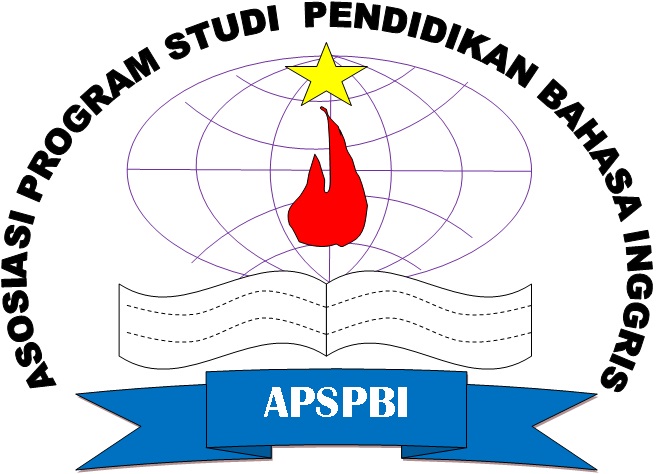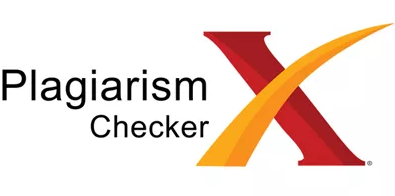Mispronunciations in Graduate Students’ Presentation Projects
Abstract
This paper explored the mispronunciations produced by Indonesian graduate students in their presentation projects. The data were collected from presentation projects of 11 graduate students of the English Education Master’s Program of Sanata Dharma University. The researchers used a document analysis as a technique to analyze the data. Results showed that 89 mispronunciations existed in the presentation projects. The mispronunciations were categorized into three types of errors, namely: 26 mispronunciations belonged to the first type, the problems in the pronunciation of non-native sound; 36 mispronunciations belonged to the second type, the carry-over of pronunciation regularities from the mother tongue (L1); and 27 mispronunciations belonged to the third type, the overgeneralizations of target language (L2) regularities. It is expected that the findings can become a stepping stone for graduate students to improve their English pronunciation.
Keywords
Full Text:
PDFReferences
Andi-Pallawa, B. (2013). A comparative analysis between English and Indonesian phonological systems. International Journal of English Language Education, 1, 103–129.
Angelina, P. (2019). improving Indonesian EFL students’ speaking skill through Pecha Kucha. LLT Journal: A Journal on Language and Language Teaching, 22(1), 86-97. Retrieved from https://e-journal.usd.ac.id/index.php/LLT/article/view/1789
Ary, D., Jacob, L. C., & Sorensen, C. (2010). Introduction to research in education (8th ed.). Belmont, CA: Wardsworth.
Asmaruddin, S. (2018). Improving the lecturers of Musi Charitas Catholic University speaking skills through oral presentation. Metathesis: Journal of English Language, Literature, and Teaching, 2(1), 81-96. doi:http://dx.doi.org/10.31002/metathesis.v2i1.623
Behnke, R., & Sawyer, C. (2000). Anticipatory anxiety patterns for male and female public speakers. Communication Education, 49(2), 187–195.
Bonaventura, P., Herron, D., & Menzel, W. (2000). Phonetics rules for diagnosis of pronunciation errors. 225–230.
Boxer, D., & Pickering, L. (1995). Problems in the presentation of speech acts in ELT materials: The case of complaints. ELT Jurnal, 49(1), 44–58.
Capecce, V. (2011). Delivering your speech. Retrieved from http://publicspeakingproject.org/PDF Files/delivery web 1.pdf
Collins, J. (2004). Education techniques for lifelong learning. Radio Graphics, 24, 1185–1192.
Ellis, R. (2008). The study of second language acquisition. New York: Oxford University Press.
Flege, J. E. (1993). Production and perception of a novel, second-language phonetic contrast. Journal of the Acoustical Society of America, 93(3), 1589–1608.
Foote, J. A., Trofimovich, P., Collins, L., & Urzúa, F. S. (2016). Pronunciation teaching practices in communicative second language classes. Language Learning Journal. https://doi.org/10.1080/09571736.2013.784345
Gall, M. D., Gall, J. P. & Borg, W. R. (2007). Educational research: An introduction (8th ed.). Boston: Pearson Education, Inc.
Gelula, M. H. (1997). Effective lecture presentation skills. Surg Neurol, 47, 201–204.
Grez, L. D., Valcke, M., & Roozen, I. (2009). The impact of an innovative instructional intervention on the acquisition of oral presentation skills in higher education. Computers and Education, 53, 112–120.
Haber, R. J. & Lingard, L. A. (2001). Learning oral presentation skills: A rhetorical analysis with pedagogical and professional implications. Journal of General Internal Medicine, 16, 308–314.
Habibi, M. W. (2016). English pronunciation problems encountered by Indonesian advanced students. UIN Maulana Malik Ibrahim Malang.
Hoffman, T. & Siebers, L. (2009). World Englishes: Problems, properties and prospects. Amsterdam: John Benjamin Publishing Company.
Indriani, L. (2019). Developing pre-service English teachers’ critical thinking by using academic journal writing 4.0. Metathesis: Journal of English Language, Literature, and Teaching, 3(2), 117-123. doi:http://dx.doi.org/10.31002/metathesis.v3i2.1859
Johlke, M. C. (2006). Sales presentation skills and salesperson job performance. Journal of Business and Industrial Marketing, 21(5), 311–319.
Johnson, W. L. (2010). Serious use of a serious game for language learning. International Journal of Artificial Intelligence in Education, 20, 175–195.
International Journal of Artificial Intelligence in Education, 20, 175–195.
Kretzschmar, W. A. (2008). Standard American English pronunciation. In Schneider, E. W. (Ed.), Varieties of English: The American and the Caribbean. Berlin: Mouton de Gruyter.
Leedy, P. D. & Ormrod, J. E. (2005). Practical research: Planning and design (8th ed.). Upper Saddle River, NJ: Pearson Education International.
Merriam, S. B. (2002). Qualitative research in practice: Examples for discussion and analysis. San Francisco: Jossey-Bass.
Mustikareni, D. (2013). Error analysis on English diphthongs pronounced by the students of SMA Negeri 1 Comal and SMA Negeri 1 Banjarnegara In English Debate on “Relax” TV Program of TVRI (Thesis). Semarang State University.
Rahmat, A. (2019). Enriching the students' vocabulary mastery in speaking through engage, study, activate method. Metathesis: Journal of English Language, Literature and Teaching, 3(1), 92-110. DOI: 10.31002/metathesis.v3i1.1237.
Richards, J. C. & Rodgers, T. S. (2001). Approaches and methods in language teaching (2nd ed.). New York: Cambridge University Press.
Rosyidah, R. U. (2014). An analysis of phonetic interferences on students’ English pronunciation in Shobahul Lughoh program of Ma’had Sunan Ampel Al Aly (Thesis). UIN Maulana Malik Ibrahim Malang.
Ruscio, J. (2001). Administering quizzes at random to increase students’ reading. Teaching of Psychology, 28(3), 204–206.
Sporer, R. (2001). The no-fault quiz. College Teaching, 49(2), 61–61.
Van Weeren, J. & Theunissen, T. J. J. M. (1987). Testing pronunciation: An application of generalizability theory. Language Learning, 37(1), 109–122.
Yigit, N. (2009). Developing presentation skills of pre-service teachers through micro-teaching method. Energy Education Science and Technology Part B: Social and Education Studies, 2(2), 55–74.
DOI: https://doi.org/10.31002/metathesis.v4i1.1879
Refbacks
- There are currently no refbacks.

This work is licensed under a Creative Commons Attribution-ShareAlike 4.0 International License.
Metathesis: Journal of English Language, Literature, and Teaching is published by English Education Department, Faculty of Teacher Training and Education, Universitas Tidar, Magelang, Indonesia in collaboration with Asosiasi Program Studi Pendidikan Bahasa Inggris Se-Indonesia (APSPBI)
ISSN: 2580-2712 (print) and 2580-2720 (online)
Jalan Kapten Suparman 39 Magelang, Jawa Tengah, Indonesia 56116
Phone (0293) 364113 Fax (0293) 362438













